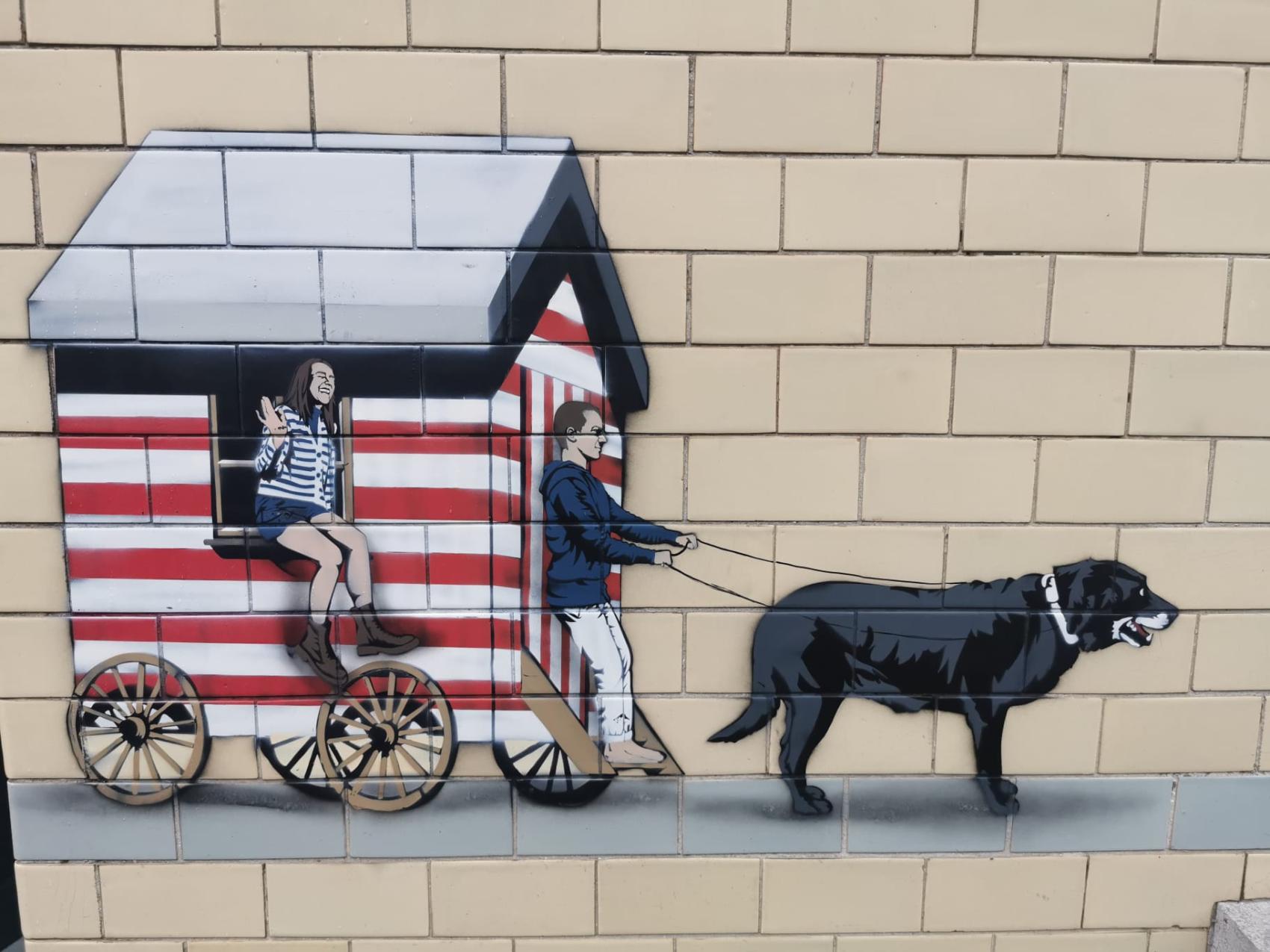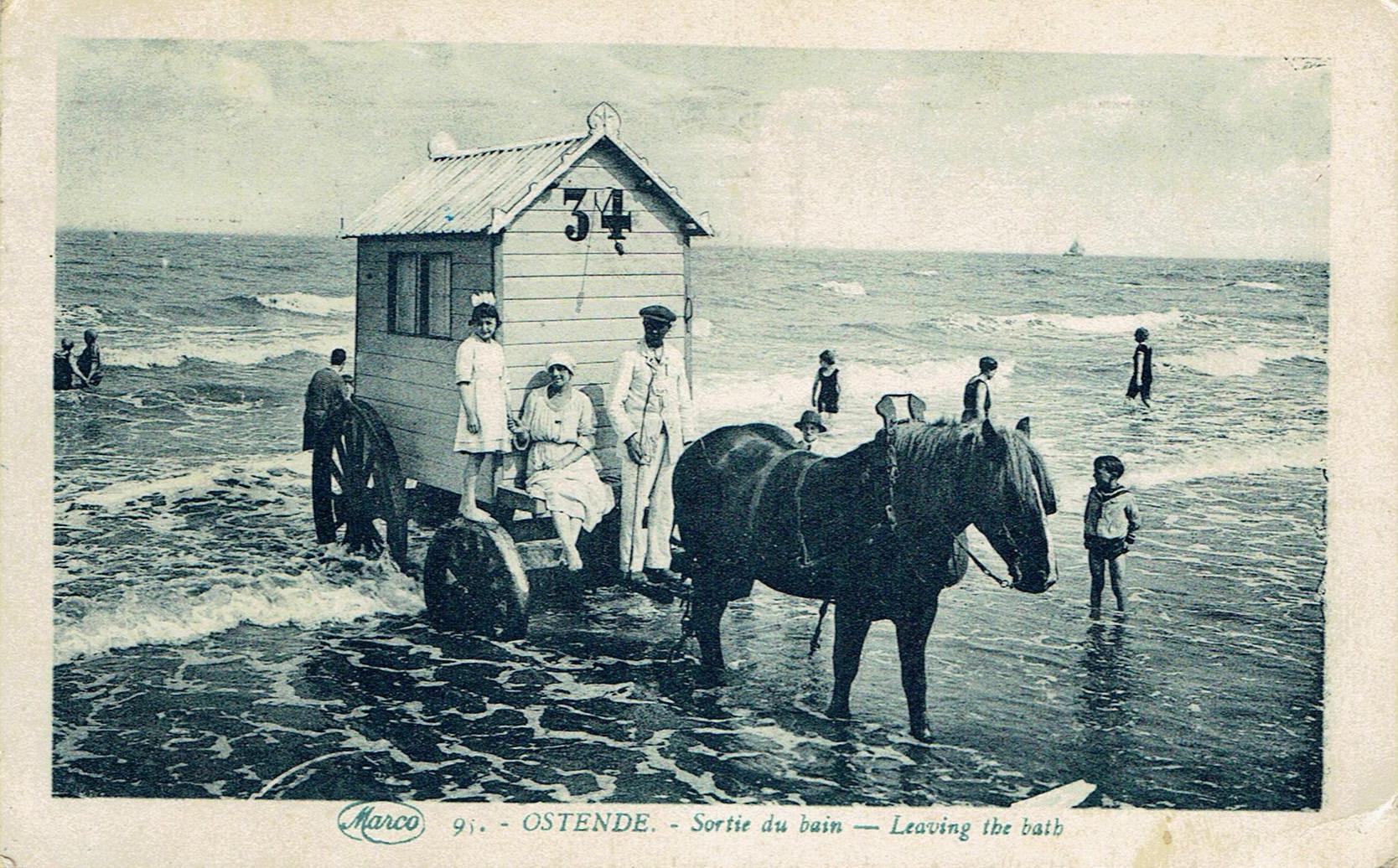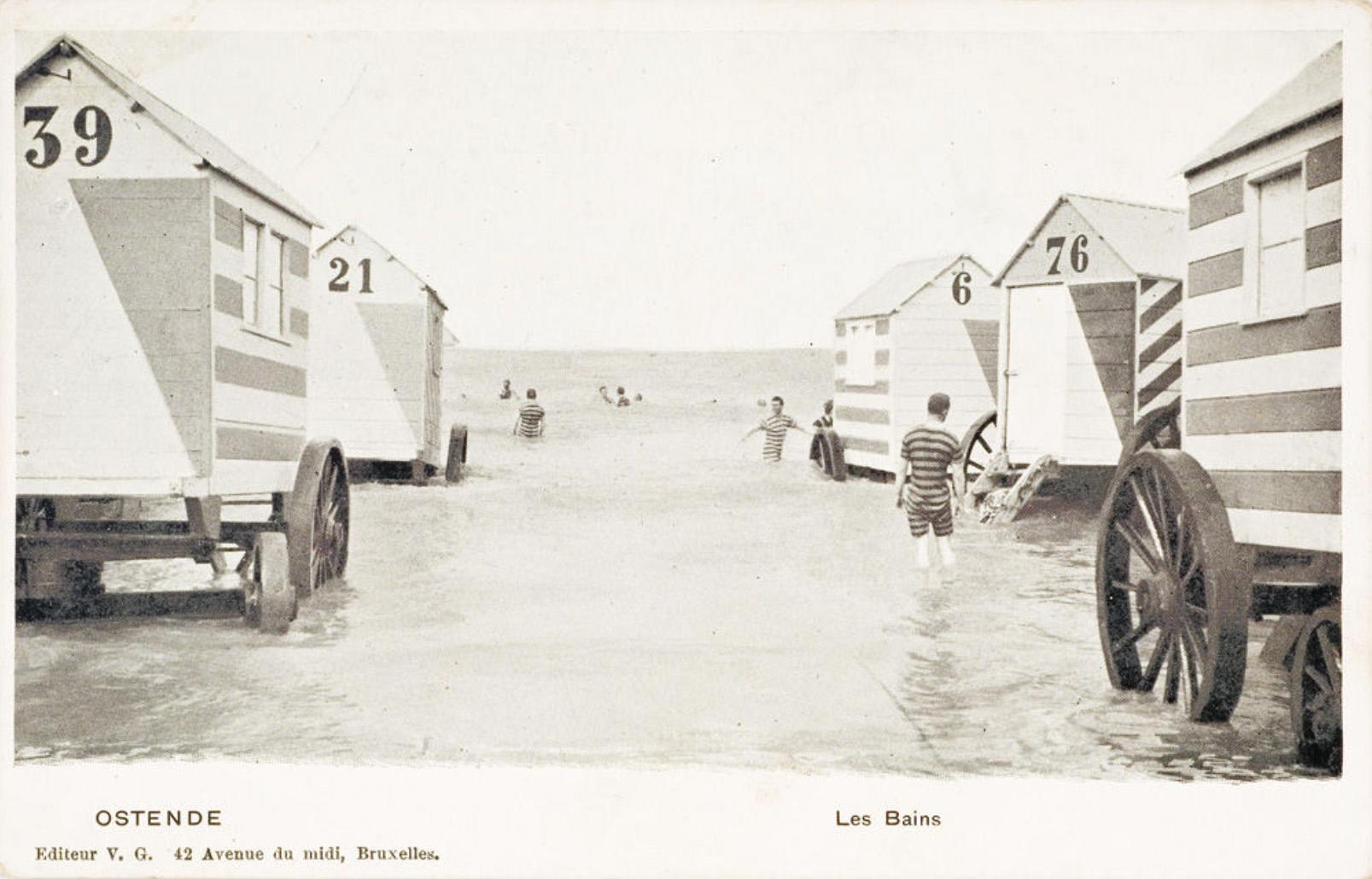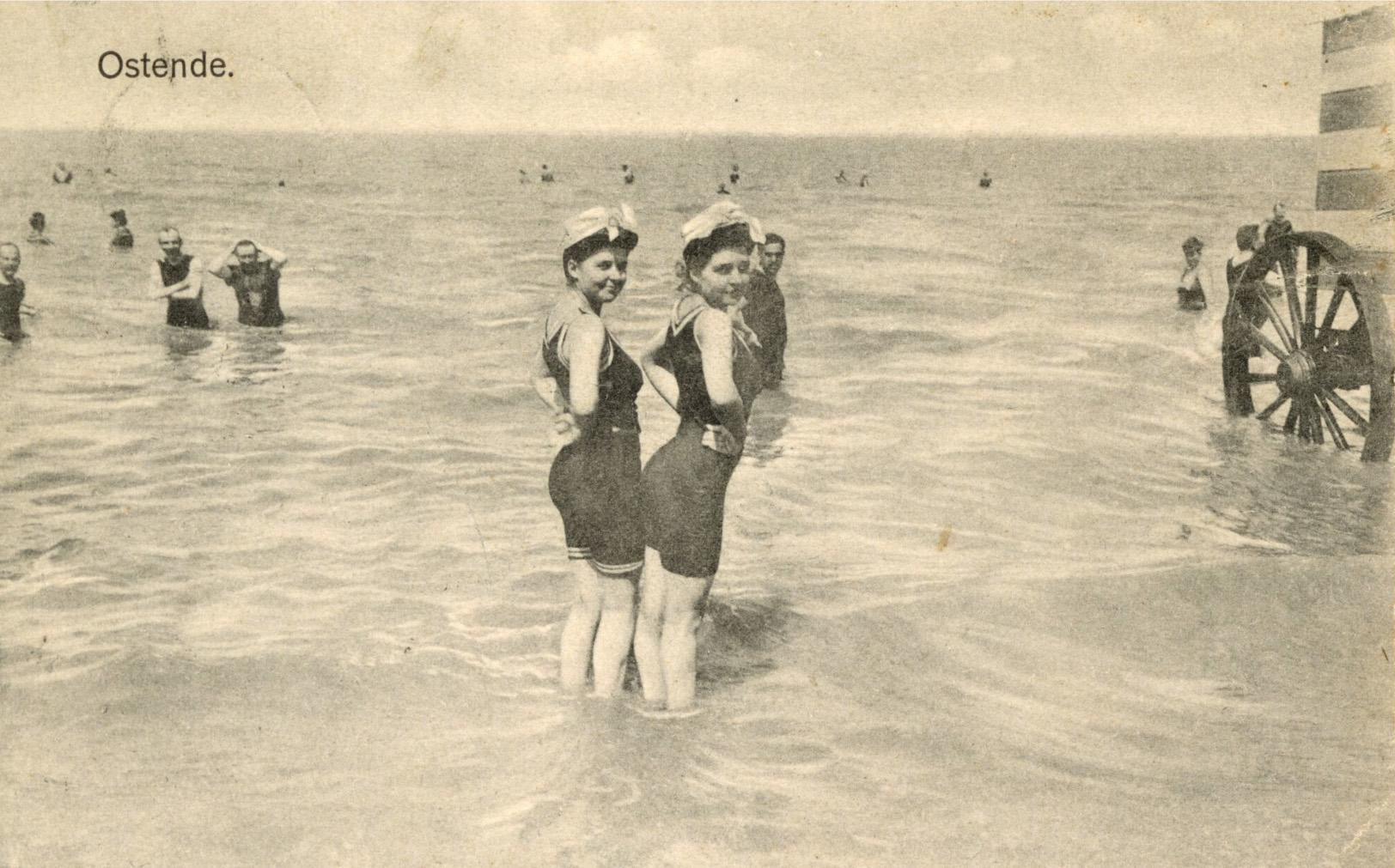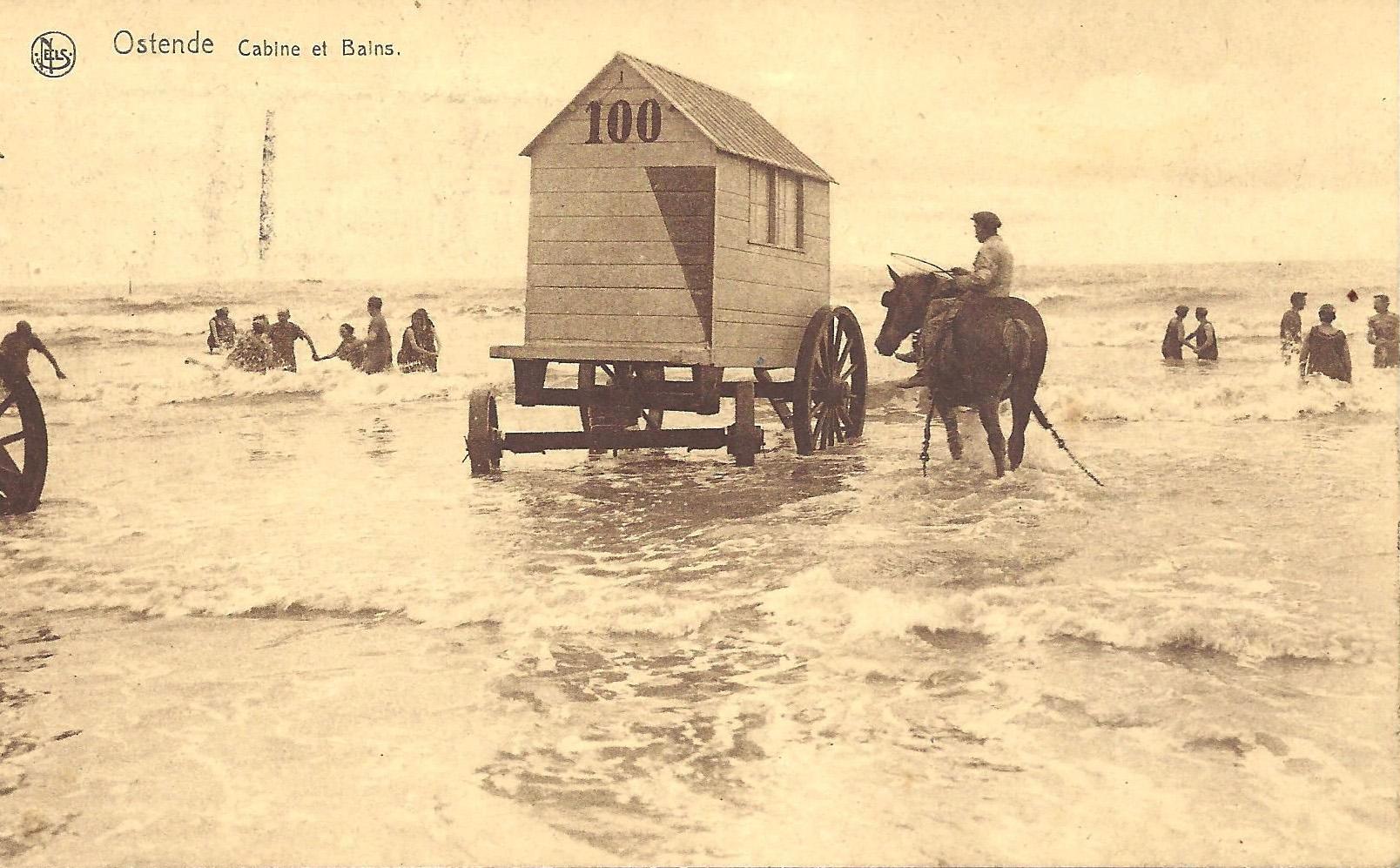Warren, resident:
Beach huts on wheels, horses on the sand. Yes, things certainly did look a bit different here at the end of the 19th century. The bathing carts were repeatedly pulled back and forth, from the beach to the water and back. The horses were often old draft horses belonging to Ostend farmers, enabling them to earn a few centimes on the side. In his composition, Ensor chose not to draw the carts in the sea because if he did, we wouldn’t see anyone. But in reality, they were positioned in the water, and there were scores of them. An 1890 newspaper report states that there were 500 bathing carts, with about 4,500 tickets sold on a peak Sunday.
But why? Why couldn’t everyone change in a regular beach hut and actually walk to the waves? Ah, it was a question of common decency of course! Back then, a woman’s bare knee was enough to make a man’s heart beat faster. And imagine if it was low tide, and a lady in a wet bathing costume had to walk back, all the way from the sea to her beach hut. Maybe 50 to 100 metres, at the mercy of men’s lustful gazes? Mais ça serait impensable, quand même! (Come on, that would simply be unthinkable!)
Therefore, the bathing cart had to roll into the sea so people could change inside and discreetly climb down the steps, into the water up to their waist. Tourist guides warned people not to forget the number of the bathing cart. Otherwise you could find yourself accidentally walking into the wrong cart... Quelle horreur!
